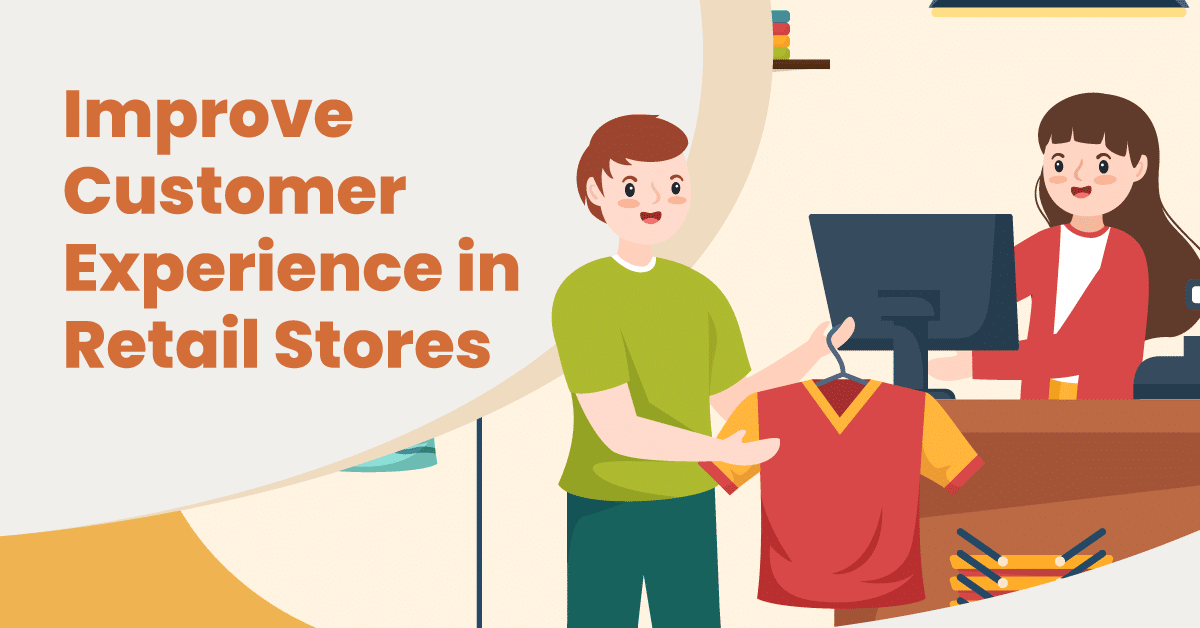
Keeping customers satisfied with your products and services should be the main focus of any business. Many small business owners wonder how to improve customer experience in retail stores. Many companies now spend incredible amounts of time and money on improving their store’s customer service and overall customer experience.
But there is a distinct difference between customer service and customer experience. And few are aware of this. Companies can have the best scripts for their customer service reps, templates for email communication, or any number of other standardized methods of customer service. However, if the customers do not have a good experience with your business, these efforts will all be in vain.
So, here are some tips and advice for providing an improving in store experiences:
1. Create Journey Maps
A customer journey map is a chart or table that gives the company valuable information about the customer journey as they experience the products and/or services.
Having this information assists the company in making adjustments to the customer experience by improving the areas that drive the least engagement. The idea is to target the areas that have the most room for improvement and going from there.
Retail businesses should use the customer journey map to schedule training, feedback sessions, or other forms of positively reinforcing development plans. Remember, you must rely on your great retail team during this process. They are integral to creating a great customer experience.
Encouraging employees to improve could make for healthy competition within the company and rewarding them for outstanding service may also be an option.
2. Professional First Contact
Many customers start their shopping journey by contacting a business via telephone or email. This first contact is crucial to the customer experience and sets the tone for all future interactions.
From the very first greeting, customers need to feel valued. Any front-line personnel, such as cashiers or baristas, could be the first person the customer speaks with. These employees be trained to know the importance of each of these interactions.
A good welcome may initially impress the customer, but going further is important. Of course, this involves actively listening to the shopper and providing them with the best way forward. Make it clear to each customer that you’re there to help and that catering to their needs is your main concern.
The initial interaction is even more important for those customers having their first contact in-store. Body language, facial expressions, tone of voice, and more all go a long way toward engendering a more positive view of your store and brand. Train your team well, and then let their personalities shine.
3. Make the Checkout Experience Fast and Easy
One thing consumers hate more than just about anything is long waits. Simplifying the checkout flow and ensuring clear signage and instructions can help customers navigate the process more easily.
Retailers can improve checkout processes by implementing efficient and user-friendly technology. Brick-and-mortar retailers should use a smart, robust point of sale system to keep lines moving. This is particularly important for high-volume shops that process dozens of transactions at each terminal every hour. Lines that take over a few minutes to get through weaken customer retention.
Offering multiple payment methods, including digital wallets and mobile payments, caters to a broader range of customer preferences.
Finally, try implementing efficient and user-friendly contactless payment options and self-checkout kiosks. These help lines move more quickly, streamline transactions, and reduce labor costs.

4. Improve Customer Relations Processes and Loyalty
Good relationships with customers, especially long-standing ones, will guarantee constant, repeat business. Plus referrals!
Maintaining such a relationship will help you retain shoppers even in the event that something goes wrong or cheaper alternatives arise.
The easiest way to go about this is through your customer loyalty program. Retailers should use a robust loyalty platform to reward their top shoppers and entice new customers to return more often.
There are many different types of loyalty programs out there, but each will run through your retail point of sale. Whether it’s a simple point-based system or one that involves shipment tracking, you need to start by discussing your needs with your POS solution.
Once in place, promote your loyalty program to your customers using digital signage templates for loyalty programs. Maintaining a great loyalty program will elevate your marketing and grow your sales exponentially.
5. Personalize The Shopping Experience
Use customer data and insights to personalize the shopping experience. Personalization in retail in-store experiences creates a deeper emotional connection with customers by tailoring product recommendations and offers to individual preferences.
Personalize the shopping journey, making it more efficient and enjoyable and increasing customer satisfaction and loyalty. Tailored suggestions reduce decision-making fatigue for customers, as they are presented with curated choices that align with their tastes.
For example, someone running a liquor store could access a customer’s purchase history through the point of sale. Then they can use that history to make suggestions regarding products that are currently in stock.
Customers feel valued and understood through personalized interactions with store staff, fostering a sense of trust and increasing the likelihood of repeat visits and word-of-mouth referrals.

A Better Customer Experience
At the end of the day, remember that customers want to be understood and valued. Companies that prioritize serving their customers a good experience will have a higher success rate and better customer retention.
The customer may not always be right, but making them feel they are valued will sway the entire conversation and experience. Establishing an emotional connection to a company or brand and creating a great experience is a key.
For more information on point of sale software, click below to speak with one of our product specialists.
FAQs: How To Improve Customer Experience in Retail Stores
Retailers can improve customer experience by focusing on staff training and customer service skills to ensure courteous and knowledgeable interactions. In addition, creating personalized shopping experiences through data analysis and customer insights helps retailers tailor recommendations to individual preferences. Finally, using modern point of sale to speed up and expedite checkout processes will keep customers happy.
Good customer experience in retail refers to providing customers with a positive and seamless journey throughout their shopping interactions. It involves understanding and meeting customer needs and preferences, delivering excellent customer service, and creating a welcoming and efficient shopping environment. A successful retail customer experience results in satisfied, loyal customers who are likely to return and recommend the store to others.
The most important customer service skills in retail include effective communication, empathy, and problem-solving. Retail employees should be able to communicate clearly with customers, understand their needs, and provide appropriate solutions to address any issues or concerns. Mastering these skills can create a positive and memorable shopping experience, increasing customer satisfaction and loyalty.












